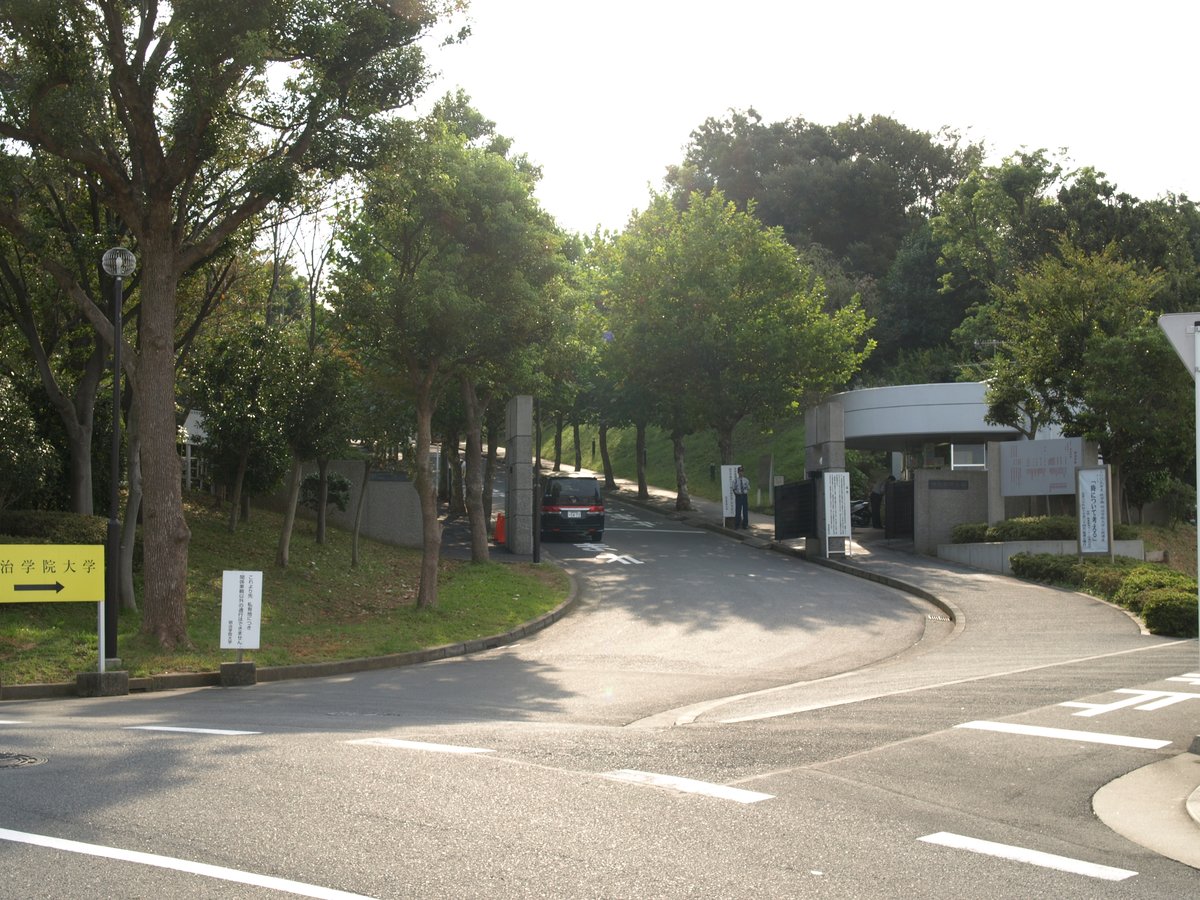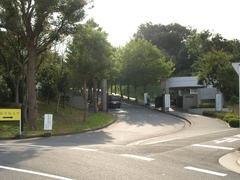
Complete Guide to Visiting Meiji Gakuin University, Tokyo, Japan: Hours, Tickets, and Nearby Attractions
Date: 14/06/2025
Introduction
Meiji Gakuin University, set in Tokyo’s upscale Shirokane district, is a living testament to Japan’s rapid modernization, Christian heritage, and architectural evolution. Founded in 1863 as the Hepburn School by Dr. James Curtis Hepburn—a pivotal figure in introducing Western education and Christianity to Japan—this university welcomes visitors to explore its storied campus, historic buildings, and cultural treasures (Meiji Gakuin University History; Study in Japan). Whether you are captivated by 19th-century architecture, interested in the history of Christianity in Japan, or simply seeking a serene and educational Tokyo outing, Meiji Gakuin University offers a unique, enriching experience.
This guide provides essential visitor details, including opening hours, ticket information, accessibility, travel tips, nearby attractions, and frequently asked questions, ensuring you make the most of your visit.
Table of Contents
- Historical Overview
- Architectural Heritage and Key Historic Buildings
- The Meiji Gakuin Historical Museum and Archives
- Visiting Information
- Notable Alumni and Cultural Contributions
- Preservation and Recognition
- Timeline of Key Milestones
- Frequently Asked Questions (FAQ)
- Conclusion
- Sources and Further Reading
Historical Overview
The Hepburn School Origins and Early Years (1863–1886)
Meiji Gakuin University traces its roots to the “Hepburn School” (Hebon-juku), founded in Yokohama in 1863 by Dr. James Curtis Hepburn and his wife Clara. The school emerged at a time when Christianity was banned in Japan, making its Christian-based, English-language instruction both bold and groundbreaking. Dr. Hepburn’s contributions extended beyond education: he compiled the first Japanese-English dictionary and established the influential Hepburn Romanization system (Meiji Gakuin University History; Study in Japan).
Institutional Development and Relocation (1886–1887)
Following a series of mergers, the Hepburn School evolved into Tokyo Itchi Eiwa-gakko (Tokyo Union College) and, in 1886, became Meiji Gakuin. The university relocated to its current Shirokane campus in 1887, establishing a permanent presence in central Tokyo (Meiji Gakuin Historical Museum Leaflet).
Christian Educational Philosophy
The university’s guiding principle, “Do for Others” (Matthew 7:12a), reflects its enduring Christian ethos. Meiji Gakuin continues to foster moral development, social contribution, and service—hosting daily chapel services, lectures, concerts, and volunteer opportunities open to all (Study in Japan; Meiji Gakuin University History).
Architectural Heritage and Key Historic Buildings
The Shirokane campus features several nationally recognized architectural treasures:
- Imbrie House (c. 1889): One of Japan’s few surviving early missionary residences, restored with original materials (Meiji Gakuin Historical Buildings).
- Memorial Hall (1890): A neo-Gothic structure that originally housed the Theology Department and library, now a designated cultural asset (Meiji Gakuin Historical Museum Leaflet).
- Meiji Gakuin Chapel (1916): The campus centerpiece, home to a historic pipe organ built using traditional techniques and designated as a Tangible Cultural Property (Meiji Gakuin Historical Buildings).
These buildings are not only architectural marvels but also living museums reflecting the university’s rich heritage.
The Meiji Gakuin Historical Museum and Archives
Founded in 1998, the museum preserves artifacts and documents vital to the university’s and Christian education’s history in Japan. Exhibitions include rare translations of the New Testament, alumni records, and displays about the university’s pioneering figures (Meiji Gakuin Historical Museum Leaflet).
Visiting Information
Hours and Admission
- Campus Grounds: Open to the public Monday–Friday, 9:00 am–5:00 pm.
- Historical Museum: Open weekdays, 9:00 am–4:00 pm. Closed weekends, public holidays, and during certain university events.
- Admission: Free for both campus and museum. Some special exhibitions or guided tours may require prior booking or a nominal fee (Meiji Gakuin University Official Website).
Accessibility
- Wheelchair Access: The campus is equipped with ramps and elevators in modern buildings. For specific access needs, contact the university in advance.
Getting There
- By Train: The nearest station is Shirokanedai Station (Tokyo Metro Namboku Line/Toei Mita Line), a 5-minute walk from campus.
- By Bus: Multiple local bus routes serve the area.
- By Car: Limited parking; public transportation is recommended (Shirokane Campus Guide).
Special Events and Guided Tours
- Guided Tours: Available by appointment, especially during open campus days and cultural festivals. Tours offer in-depth exploration of historic buildings and campus life.
- Events: The university hosts concerts, lectures, and seasonal festivals—check the events calendar for details.
Nearby Attractions
- Institute for Nature Study: A tranquil urban nature reserve adjacent to campus.
- Happo-en Garden: A scenic Japanese garden within walking distance.
- Roppongi and Tokyo Tower: Easily accessible for extended sightseeing.
Notable Alumni and Cultural Contributions
Meiji Gakuin’s alumni include renowned literary figure Toson Shimazaki, who penned the university song’s lyrics, and numerous leaders in Japan’s academic, literary, and social spheres (Meiji Gakuin University History). The university’s ongoing engagement with global educational and humanitarian organizations underlines its motto: “Do for Others.”
Preservation and Recognition
The university’s historic structures are protected as cultural assets by city and national authorities, ensuring their preservation for future generations (Meiji Gakuin Historical Buildings).
Timeline of Key Milestones
| Year | Event |
|---|---|
| 1863 | Hepburn School founded in Yokohama |
| 1886 | Meiji Gakuin established via merger |
| 1887 | Relocation to Shirokane, Tokyo |
| 1889 | Imbrie House constructed |
| 1890 | Memorial Hall completed |
| 1916 | Meiji Gakuin Chapel completed |
| 1998 | Historical Museum established |
| 2009 | Historic pipe organ installed in chapel |
Frequently Asked Questions (FAQ)
Q: What are the campus and museum visiting hours?
A: Campus: Monday–Friday, 9:00 am–5:00 pm; Museum: Monday–Friday, 9:00 am–4:00 pm. Both closed weekends/holidays.
Q: Is there an entry fee?
A: Admission to the campus and museum is free. Special events or tours may require prior booking.
Q: Are guided tours available?
A: Yes, by appointment and during special events. Contact the university or check the website for details.
Q: Is the campus accessible for visitors with disabilities?
A: Yes, with ramps and elevators. Contact ahead for specific needs.
Q: How do I get to the university?
A: By train, alight at Shirokanedai Station (Tokyo Metro Namboku/Toei Mita Lines), then walk 5 minutes.
Conclusion
Meiji Gakuin University is a premier Tokyo destination for history enthusiasts, architecture admirers, and those interested in Christian educational heritage. With free entry, accessible facilities, and a central location near major Tokyo attractions, the campus offers a culturally rich and peaceful retreat from the city’s bustle. Enhance your visit by checking current hours and special events on the official website and consider the Audiala app for curated audio guides and virtual tours (Audiala App).
Sources and Further Reading
- Meiji Gakuin University History
- Study in Japan - Meiji Gakuin
- Meiji Gakuin Historical Museum Leaflet
- Meiji Gakuin Historical Buildings
- Shirokane Campus Guide
- JPSS Profile - Meiji Gakuin University
- Audiala App































































































































































































































